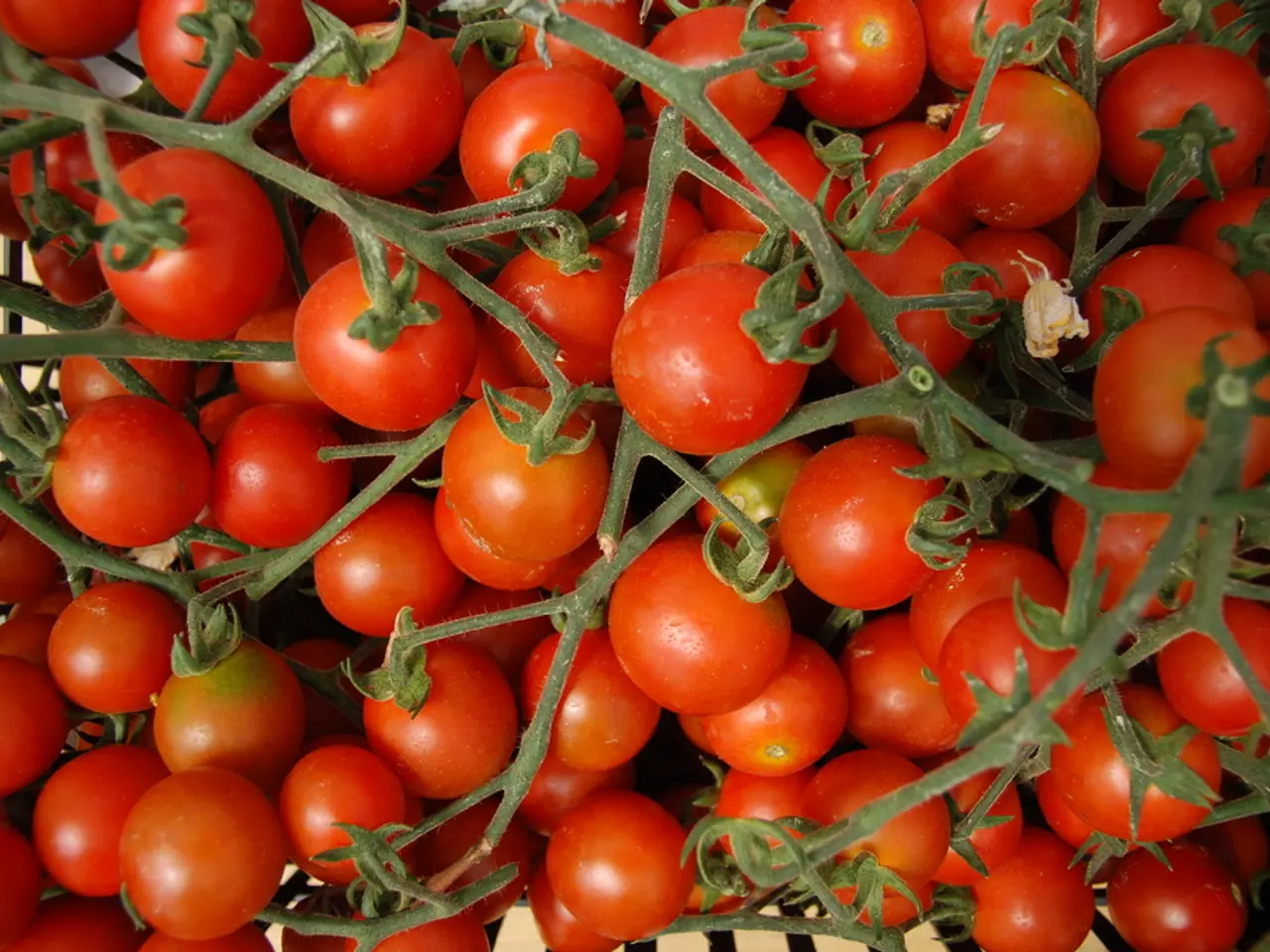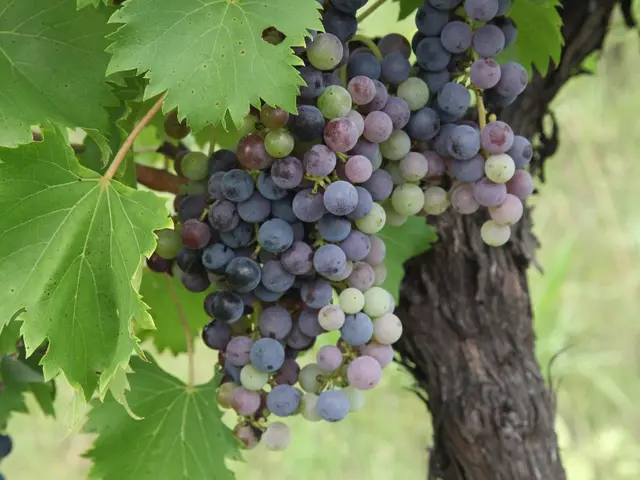Watering Tomatoes in August for Faster Ripening and Larger, Sweeter Fruits Directly on the Vine
Caring for Tomato Plants: A Comprehensive Guide
Growing tomatoes can be a rewarding experience, but it requires careful attention and the right practices to ensure a bountiful harvest and healthy plants. Here's a guide to optimally care for tomato plants for growth, ripening, and protection against diseases like late blight, in both open ground and greenhouse environments.
Sunlight and Location Tomatoes thrive in full sun, with at least 6-8 hours of direct light daily, which supports fruit development and ripening.
Soil Use well-draining soil rich in organic matter, amended with compost or aged manure for nutrients and structure.
Watering Water deeply and consistently to keep soil moist—not just wet on top but at root depth. Adjust frequency based on climate; during hot weather, daily watering may be needed. Avoid overhead watering to minimize fungal disease risk.
Mulching Apply 2-3 inches of organic mulch around plants to retain moisture, reduce evaporation, suppress weeds, and minimize soil-borne disease spread. Keep mulch away from plant stems.
Support and Pruning Use sturdy stakes, cages, or trellises to keep plants upright and improve airflow, reducing disease risk. Prune indeterminate varieties regularly to remove suckers and improve air circulation; avoid heavy pruning on determinate types to maximize yield.
Fertilization Start with a balanced fertilizer at planting or compost-amended soil, then side-dress with tomato-specific fertilizer or compost every 3-4 weeks. Avoid excess nitrogen to prevent lush foliage at the expense of fruiting.
Disease Prevention and Management - Maintain good airflow around plants by spacing them adequately. - Regularly inspect plants for pests and diseases, and act quickly if detected. - Avoid overhead watering to reduce leaf wetness, a key factor in late blight. - Use preventive fungicides or organic treatments suitable for your environment if late blight has been a problem previously (especially in greenhouses or humid conditions). - Practice crop rotation and avoid planting tomatoes or related plants in the same spot year after year to reduce pathogen buildup.
Temperature and Environment - Tomatoes thrive best between 70°F and 85°F (21°C to 29°C). Protect young plants from cold with row covers or cloches. - In greenhouses, manage humidity and temperature carefully to prevent disease and encourage healthy growth.
Ripening If frost threatens in outdoor gardens, harvest mature green tomatoes and ripen them indoors at room temperature. Covering plants with clear plastic or using heat sources can extend the season for ripening late fruits.
Additional Tips - Placing ripe tomatoes or apples near green tomatoes can speed up the ripening process, as they release ethylene. - Tomatoes require a balanced mix of mineral nutrients for optimal growth and ripening. - Removing new buds, flowers, and small fruits at the tops can speed up ripening for tomatoes. - Dipping slightly infected tomatoes in hot water (60°C) for 15 seconds and letting them ripen can save them. - In a greenhouse, sudden fluctuations in daytime and nighttime temperatures should be avoided, with ventilation necessary during the day and heating turned on at night during cold periods. - Tomatoes need nitrogen, phosphorus, potassium, calcium, magnesium, and sodium. It's optimal to alternate organic and mineral fertilizers. - Spirit injections of 0.5 ml of vodka into the fruit can speed up its reddening, but it's labor-intensive and not suitable for sick plants. - Manure and bird droppings should not be used when planting tomato seedlings in holes. - Late blight is a primary enemy of tomatoes, especially towards the end of summer. To prevent infection, plants in open ground should be covered with plastic when nighttime temperatures start to drop. - Choosing early and dwarf tomato varieties can help obtain a decent harvest in unpredictable weather. - Lime is considered the favorite tomato fertilizer, enriching the soil with minerals, strengthening roots, and protecting against pests. Potassium humate improves soil aeration and increases yield but can only be used once every 2-3 weeks. - Excessive leaves and suckers should be removed, leaving up to 17 leaves per plant, and all leaves below fruit clusters should be completely removed. - Nitrogen should only be given to tomatoes in the first half of the season. Overfeeding with nitrogen in the second half of summer can worsen taste and increase the risk of late blight.
This integrated approach—combining proper watering, nutrient management, physical support, and vigilant disease prevention—is critical to promote strong growth, abundant fruit ripening, and effective control of diseases like late blight in both open and protected environments.
Tomatoes, as part of the home-and-garden lifestyle, not only enhance the aesthetics of a garden but also contribute to a rewarding home-grown produce. Proper care of tomato plants in sunlit home-and-garden settings, including selection of suitable soil, watering practices, mulching, support and pruning, fertilization, disease prevention and management, and maintaining the right temperature and environment, directly impacts plant health and fruit yield. Embracing a gardening routine that adheres to these factors fosters a thriving tomato lifestyle in both open ground and home-greenhouse environments.






